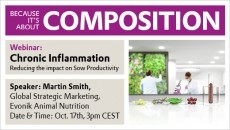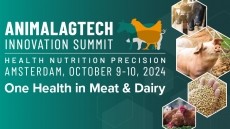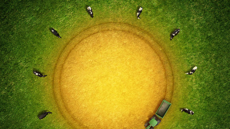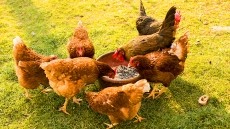COVID-19: Likely drop in EU feed demand in H2 2020 due to market disruptions

Another hurdle for the smooth delivery of feed materials in the EU was thrown up by the Romanian government last week, Alexander Döring, secretary-general, FEFAC, told FeedNavigator yesterday.
Green Lanes
March 2020 saw the EU Commission move to ensure that EU-wide supply chains would continue to operate, calling on EU member states to designate all the relevant internal border-crossing points on the trans-European transport network (TEN-T) as ‘green lane' border crossings. Those crossings should be open to all freight vehicles, whatever goods they are carrying. Crossing the border, including any checks and health screening, should not take more than 15 minutes, added the EU officials.
EU Commissioner for Transport, Adina Vălean, said the green lanes are specifically designed to protect transport workers at the frontline of this crisis. “This set of recommendations will ease their already stressful mission and it will bring more safety and predictability to their work.”
FEFAC expressed great relief over the timely action by the EU executive.
“Romania's publication of its military ordinance on April 9 banning grain exports to non-EU countries, including wheat, barley, maize, flour, bakery wares and soybeans, led to serious market disruptions, as loaded vessels could no longer leave Constanta port or at cross border posts.
“Romanian officials had requested written declaration from transporters that these products would be used for domestic consumption only in other EU destination countries, no re-export to markets outside of the EU was allowed.”
This meant that soybean meal (SBM) could initially not be delivered from the port of Constanta to feed mills in Bulgaria, said Döring.
“However, since Monday, April 13, trucks have been able to cross the border to Bulgaria, and the situation regarding SBM transport is about to normalize, thanks to concerted actions from our national feed mill associations.”
The situation in Constanta port and at cross border posts remains a ‘hotspot’ though, he stressed.
“All ferry crossings are closed and only two bridges can be used for grain and SBM transport for EU destination countries. The EU Commission has sent a formal complaint to Romanian authorities stating that their ordinance violates EU single market rules and the ‘Green Lane’ agreement.”
Supply of rapeseed meal, DDGS hit
In general, however, the feed material supply situation as well as compound feed deliveries on-farm are back on track, including imports from countries beyond the EU, said Döring.
“Feed demand is still relatively stable, although several livestock sectors have been hit hard due to dramatic shifts in consumption patterns. Market availability of EU produced vegetable proteins has been reduced due to falling demand for biofuels, meaning lower output of rapeseed meal and DDGS.”
The industry has also been facing some issues with micro-ingredients due to COVID-19 linked logistics issues in China - lack of vessels and containers - and due to partial closure of ports in India, he said.
“Organic feed producers also lack supplies of organic soybean meal from China.”
Impact of food service sector closure on EU feed output
When asked how the pressure on EU dairy sector, due to recent foodservice sector and restaurant closures, will undermine EU feed demand in the near future, he noted:
“The closure or substantial reduction of the activities of the foodservice sector has also hit the veal and beef sector, as well as aquaculture and lamb production. EU livestock and aquaculture farmers as well as processors have already called on the EU Commission for market crisis management measures such as private storage aid. [Such aid] will also become available for the first time for the EU aquaculture sector through the EU fisheries funds, but FEFAC expects that feed production could be reduced in Q3 and Q4.”


















